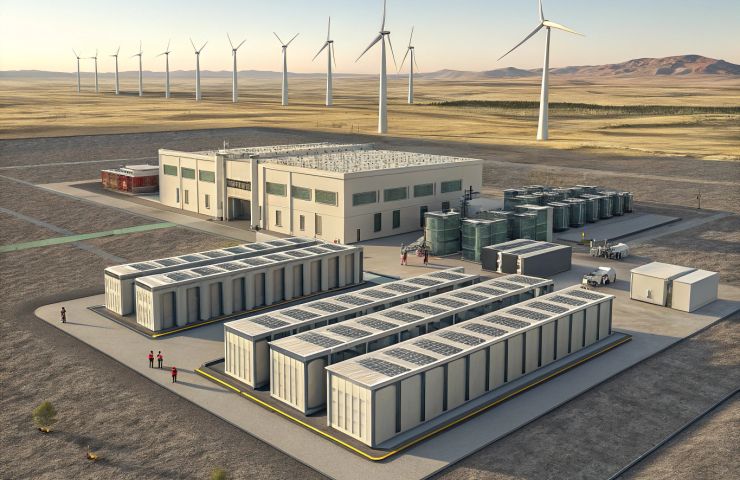Bloom Energy fuel cells ignite 900 MW Wyoming power plant revolution

Sparking a Clean Energy Revolution in Wyoming
Imagine a world where Wyoming’s next power plant doesn’t burn a single lump of coal. Well, that world’s closer than you think. BFC Power just filed to build a 900 MW power plant in Laramie County, Wyoming, tapping into Bloom Energy fuel cells—specifically its modular solid oxide fuel cells. Since launching in 2001 and going public in 2018, Bloom has racked up over 1.3 GW of installs powering data centers, factories and critical infrastructure. These ceramic stacks aren’t your grandpa’s generators—they convert natural gas, biogas or hydrogen into electricity on-site, 24/7. With Wyoming’s vast open plains, available land, existing grid capacity and a welcoming regulatory climate, this project could catapult the state to the forefront of clean-tech innovation.
Taming the Power Crunch with Game-Changing Tech
Let’s be honest—data centers and heavy industry are starved for juice, and old-school grids just can’t keep up. Building new transmission lines takes years, and combustion turbines spew NOx and guzzle maintenance dollars. Here’s the game-changer: Bloom’s Energy Server systems flip the script on distributed power generation. You drop them behind the meter at customer sites, and voilà—on-demand electricity without the bureaucratic headache of grid upgrades. Plus, they cut CO2 and ditch the emissions clouds that come with marginal grid assets.
Rapid deployment in months, not years
Modular scalability—you stack capacity block by block
Fuel flexibility—run on natural gas today, biogas or hydrogen tomorrow
Boosted resilience against blackouts and storm outages
This approach tackles reliability, emissions and cost all at once—a clear win for operators and the planet.
The Magic Behind Solid Oxide Fuel Cells
So, what’s happening under the hood? Picture a ceramic sandwich firing up at 600–1,000 °C. On one side, you feed natural gas, green hydrogen or biogas; on the other, pure oxygen. No flames, no turbines—just an electrochemical reaction that splits fuel molecules and frees electrons into an electric current. The leftovers? Mostly water, plus a trickle of CO2 when using hydrocarbons—far less than a combustion turbine would emit.
High efficiency—up to 65% electrical vs. ~35% for gas turbines
Quiet, low-maintenance operation—no spinning blades to replace
Heat recovery potential—waste heat can generate steam or hot water
Modular design—each stack is a building block for precise scaling
It’s reliability, performance and a straight shot to near-zero emissions as you shift to hydrogen or biogas feeds.
Why Laramie County is the Perfect Launchpad
On paper, Laramie County checks all the boxes. Fewer than 101,000 residents spread across 2,600 + square miles means land is plentiful and affordable. Decades of coal, gas and booming wind farms have left robust transmission lines in place. State regulators are actively courting pilots of clean energy Wyoming projects—so BFC Power’s filing isn’t a footnote; it’s a flagship for the state’s energy transition.
Available land parcels—ideal for a modular 900 MW footprint
Regulatory support—state incentives and streamlined permitting
Legacy grid capacity—easy tie-ins to existing transmission
Local workforce—technicians and engineers ready to roll
On top of that, BFC Power is collaborating with local officials and community stakeholders to smooth approvals and maximize economic benefits. Together, they’re sketching out a blueprint for how old-school energy hubs can pivot to low-carbon power.
Real-World Rollout and Immediate Impact
You don’t need to wait for prototypes—modular Energy Servers are already powering mission-critical sites today:
American Electric Power tapped Bloom’s stacks in a 1 GW deal to back up data centers.
Equinix signed on for on-site fuel cells to guarantee uptime at hyperscale facilities.
Now, imagine scaling that to a 900 MW power plant in Wyoming—behind the meter, serving multiple data hubs or manufacturing campuses. What’s in it for you?
Increased energy resilience: fewer wind and solar curtailments
Lower carbon footprint: displaces dirtier grid power at the margin
Economic boost: local jobs for installation, maintenance and support
Community perks: tax revenues funding schools, roads and services
Sure, there are trade-offs—fuel logistics, cost competitiveness and environmental monitoring. But early studies show the upside far outweighs the risks, especially as the tech matures and green hydrogen ramps up.
Disruption on the Horizon
This isn’t just another plant—it’s a signpost pointing to decentralized, low-emission power architecture. Forget massive grid overhauls. Picture nimble, modular clusters popping up next to the biggest demand centers. With tech costs falling and supportive clean energy Wyoming policies in play, fuel-cell rollouts coast to coast are inevitable.
Decarbonization mandates: states and corporations demanding zero-carbon solutions
Grid congestion: transmission build-outs lagging behind surging demand
Fuel evolution: shifting from natural gas to renewable hydrogen and biogas
Tech maturity: over 1.3 GW of installed solid oxide fuel cells and counting
As Bloom Energy fuel cells prove their mettle at scale, expect similar projects in Texas, California and beyond. Each deployment strengthens supply chains, drives costs down and speeds the shift to a cleaner grid—one ceramic stack at a time.
Final Shot
Wyoming’s always been a trailblazer—from cattle drives to oil, gas pipelines and wind farms. Now it’s leading a power revolution with solid oxide fuel cells. This 900 MW power plant shows you don’t need coal or spinning turbines to keep data centers and factories humming. You just need modular, reliable, low-emission systems that scale fast.
So here’s the million-dollar question: if you’re a business leader, policymaker or grid operator, can you afford to sit this one out? The future of power is here—modular, clean and right where you need it. Let’s ride this wave together!
